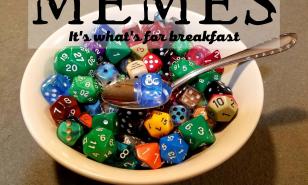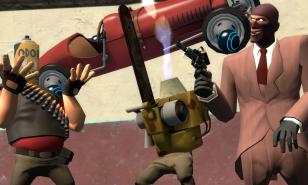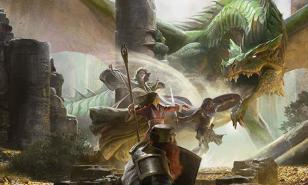D&D Best Damage Types (All Damage Types Ranked)
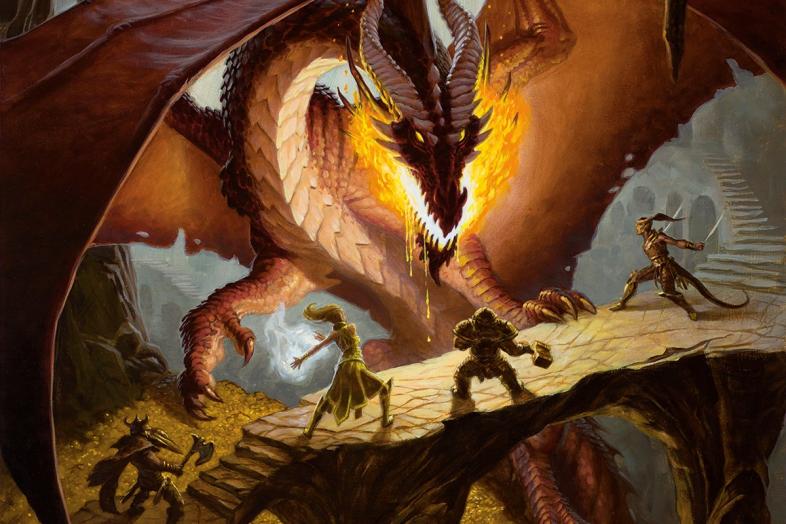
Whether you are a seasoned adventurer or finding yourself at the table for the first time, Dungeons and Dragons 5th Edition is likely going to be your entry point into the fantasy role-playing world. While there are infinite possibilities in the world of your Dungeon Master, you will undoubtedly be asked to “Roll for Initiative” along the way.
This is a list of all the types of damage that can be dealt in Dungeons and Dragons ranked from good to best. It is worth noting that only regular powers and creatures from the Monster Manual were taken into account, so those from supplemental texts or your DM’s own homebrew may be exceptions to this list. It’s always a good idea to speak with your DM to find out what their campaign will entail before leaving the tavern.
15. Poison Damage

Poison is nasty business...be like Mad-Eye Moody and carry a flask!
Poison damage is a type of damage that is caused by the effects of certain toxins and venoms. These substances can be inhaled, ingested, or injected into a creature, and they can cause a variety of harmful effects, such as nausea, paralysis, and even death. Poison damage can be inflicted by a variety of sources, including monster attacks, traps, and magical spells. Players can also use poison in their own attacks; however, the use of poison is often considered to be a controversial or dishonorable tactic, and some D&D campaigns may have consequences for characters who use poison.
As a damage type, poison is one of the weakest options available to players. While the potential damage threshold is high, poison is resisted by a large number of the creatures in D&D with nearly a hundred being outright immune. Unless your campaign is centered almost entirely on interactions with humans and mundane creatures, you may want to consider other options when developing your characters skills and acquiring items.
While poison is rarely effective as a damage type, that does not mean that it should be entirely discounted. Applying poison to a blade before venturing into a dungeon may yield little results, but slipping it into someone’s drink at a tavern will almost certainly have an effect. It’s worth mentioning that not all poison is “poison” as items like “Truth Serum” can also fall under this list. Every instance in the game is different, so a bottle of poison in your bag may not be a bad item to have. Consider poison as a tool and you’ll find many more ways to make it effective.
Poison Damage Strengths
- Situational Variety
- Poison can be inhaled, ingested, applied through contact, or by injury. This variance can lead to creative solutions to difficult scenarios.
- High Damage Output
- Poison damage has one of the highest outputs of damage in the game, so when it works…it really works.
Poison Damage Weaknesses
- Monster Resistance/Immunity
- More than any other type of damage, monsters included in the Monster Manual are able to resist the effects of poison, with many like the Zombie or Skeleton being entirely immune.
- Illegal
- In most campaigns, poison is considered to be a tool of evil, with only criminals and dark creatures making use of its effects. While this may fit your character, getting caught could land you in a tight spot.
- Expensive
- Depending on the desired effect, the Dungeon Master’s Guide values poison at prices ranging from 150 gold pieces (gp) to 2,000gp per bottle. When you keep in mind most NPCs earn between 5-7 silver pieces (sp) per week, this puts the price neatly out of reach for early adventurers.
- While it is possible to craft poison with the proper skills and alchemist’s set, merely carrying the ingredients could land you in trouble with the law.
Damage Type Usefulness Rating: 44/100
14. Slashing Damage

Drizzt and his scimitars are legendary...it's just a good thing they are magical!
For slashing, as well as piercing, bludgeoning, and silver/adamantine, I will be evaluating the damage types based on their non-magical aspects. Magical weapon damage will be given a separate treatment down the road.
Slashing damage is a type of physical damage that is caused by weapons or attacks that cut or slice through flesh and armor. Slashing damage is typically inflicted by swords, axes, and other bladed weapons, as well as some natural attacks, such as claws or teeth. Weapon damage is typically resisted or mitigated by a creature's armor class (AC), which represents its ability to deflect or absorb incoming attacks. Some creatures may also have resistance or immunity to slashing damage, depending on their physiology or magical abilities.
Slashing damage can be inflicted by a variety of sources, including player character attacks, monster attacks, and the environment. For example, a fighter might attack an enemy with a longsword, dealing slashing damage, while a werewolf might swipe with their claws, dealing slashing damage right back.
Non-magical damage types are among the weakest in the game, but this is almost to be expected. Afterall, you can’t really expect that your iron sword is going to inflict heavy damage on Stone Golem or Shadow Demon, can you? Of the basic weapon damage types, however, slashing tends to be the least versatile and effective option. Slashing weapons are the most common available, especially for starting out, and save unique early situations, they will carry your adventurer through most of their trouble.
If slashing weapons are going to be your forte, there are some options that are generally better than others. The most iconic weapon of this pull would be the Longsword, which deals 1d8 slashing damage, but has the versatile function to allow it to be wielded with two hands, dealing 1d10 slashing damage. The scimitar is also a great option for characters like the ranger or rogue, and while it deals 1d6 slashing damage, its finesse type allows you to use your dexterity modifier to determine attack success, rather than strength.
Slashing Damage Strengths
- Common Acquisition
- Swords, daggers, and axes are common starting equipment for nearly every player, making these weapons easy to come by.
- Adaptable
- Slashing damage can be great against an enemy, but your Great-Axe may also work to cut down trees for shelter. Don’t be afraid to work with your environment.
- Typically Effective
- Few enemies have resistances or immunities to any of the basic damage types, meaning your hits will often have a chance to be effective.
Slashing Damage Weaknesses
- Non-Magical
- While few enemies have complete resistance or immunity to basic damage types, they often can resist the weapons that deal them, provided they are less than magical.
- Armor
- A wide variety of enemies in D&D are capable of wearing armor, or like the Great Dragons, grow it on their own backs. Defeating an opponent's AC will be necessary to get your damage through, and this can often be a feat on its own.
Damage Type Usefulness Rating: 50/100
13. Piercing Damage
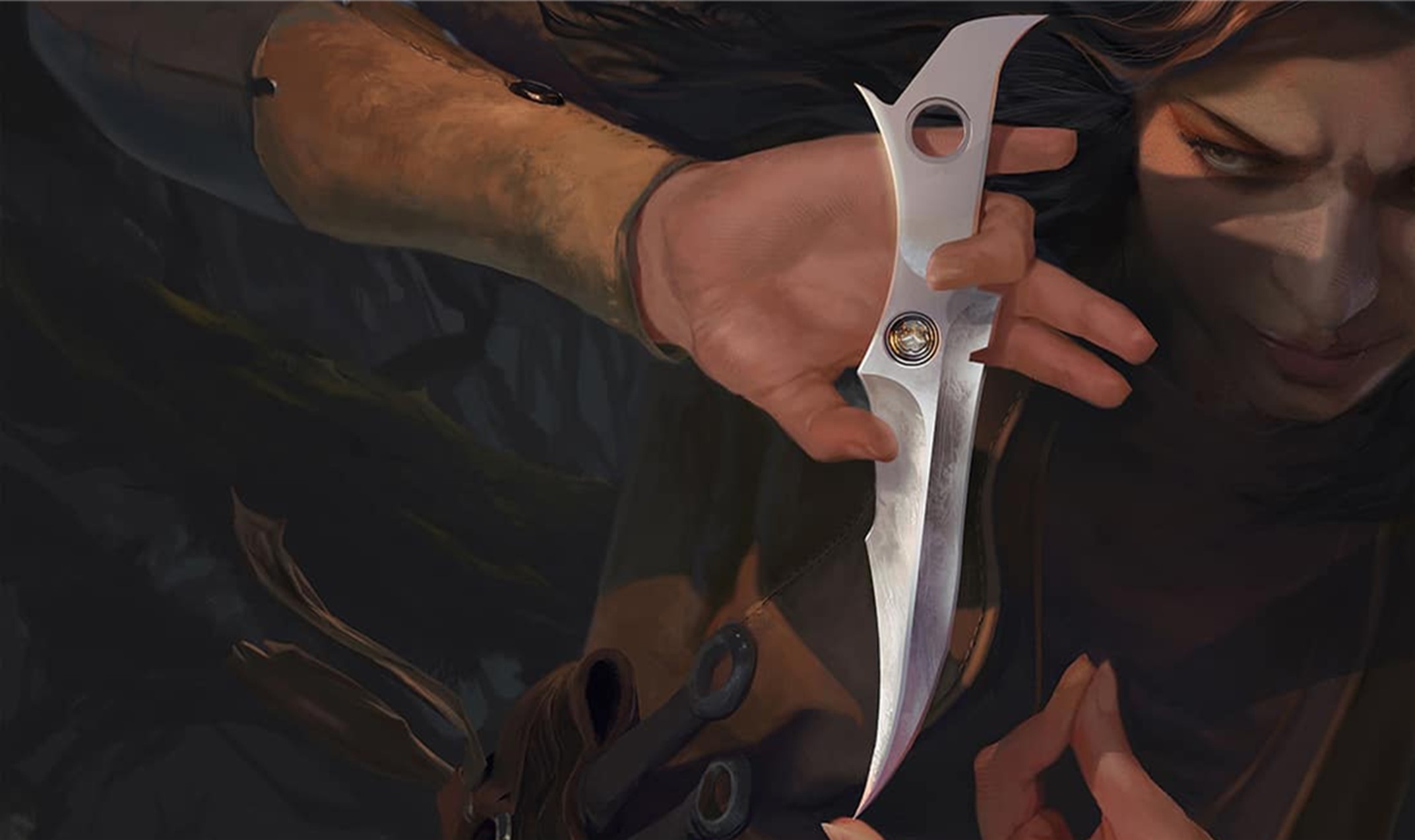
In the immortal words of Jon Snow, "Stick them with the pointy end."
Piercing damage is a type of physical damage that is caused by weapons or attacks that puncture or pierce through flesh and armor. Piercing damage is typically inflicted by spears, arrows, daggers, and other pointed weapons, as well as some natural attacks, such as claws or teeth. This damage type is typically resisted or mitigated by a creature's armor class (AC), which represents its ability to deflect or absorb incoming attacks. Some creatures may also have resistance or immunity to piercing damage, depending on their physiology or magical abilities.
Piercing damage can be inflicted by a variety of sources, including player character attacks, monster attacks, and the environment. For example, a rogue might attack an enemy with a rapier, dealing piercing damage, or a player may fall into a pit of spikes, being dealt bludgeoning and piercing damage.
While suffering from the same pitfalls as other non-magical weapon damages, piercing damage tends to provide a character with some options in combat. Weapons that deal piercing damage come in many forms, including rapiers, lances, bows, and spears. With this variety, a player can seldom go wrong having piercing damage as their ally for early game combat.
Should you choose to go the route of piercing weapons, the Longbow is an excellent choice, providing long range with a 1d8 piercing damage effect. If fight flexibility is your preference, the spear or javelin may be a better option, each dealing 1d6 piercing damage and having the capability to be thrown, while the spear has the added benefit of being versatile, dealing 1d8 piercing damage when wielded with two hands.
Piercing Damage Strengths
- Easy Acquisition
- There is no shortage of daggers, spears, and bows in the world of D&D, so if you don’t have one in your starting equipment already, a quick trip to any town should provide a ready stock.
- Adaptable
- Like most aspects of the game, not everything must always be as it seems. Your spear can deal damage, sure, but a skilled throw could stop the cogs of the trap about to wipe your whole party.
- Typically Effective
- Few enemies have resistances or immunities to any of the basic damage types, meaning your hits will often have a chance to be effective.
Piercing Damage Weaknesses
- Non-Magical
- While few enemies have complete resistance or immunity to basic damage types, they often can resist the weapons that deal them, provided they are less than magical.
- Armor
- A wide variety of enemies in D&D are capable of wearing armor, or come equipped with natural armor, like the hide of an owlbear. Defeating an opponent's AC will be necessary to get your damage through, and this can often be a feat on its own.
Damage Type Usefulness Rating: 52/100
12. Bludgeoning Damage

Wulfgar helps a neighboring giant with his toothache...colorized.
Bludgeoning damage is a type of physical damage that is caused by weapons or attacks that strike or bash through flesh and armor. Bludgeoning damage is typically inflicted by clubs, maces, hammers, and other blunt weapons, as well as some natural attacks, such as fists or tails. This damage type is typically resisted or mitigated by a creature's armor class (AC), which represents its ability to deflect or absorb incoming attacks. Some creatures may also have resistance or immunity to bludgeoning damage, depending on their physiology or magical abilities.
Bludgeoning damage can be inflicted by a variety of sources, including player character attacks, monster attacks, and the environment. For example, a barbarian might attack an enemy with a great club, dealing bludgeoning damage, while a giant might stomp on an enemy, causing both bludgeoning and force damage.
Of the physical damage types, bludgeoning may be the most effective. It is hard to take a blow to the head, or recover from a large fall, no matter what type of armor you, or the enemy, may be wearing. The additional advantage to bludgeoning is that some basic creatures, such as the Skeleton, are actually vulnerable to the crushing blows…making this the most effective of the physical damage types.
If the heft of the weapon matters to your character, there are a few options that may be the most beneficial. The Light Hammer gives you the chance to feel like Thor, as its 1d4 bludgeoning damage can be dealt up close, or at a range of up to 60 feet. The Quarterstaff (1d6) and Warhammer 91d8) each contain the versatile function, allowing you to move up a dice for each when held in both hands.
Piercing Damage Strengths
- Common Acquisition
- Every tree branch is just a night of whittling away from becoming a club, and every pebble holds the possibility of a fall. Bludgeoning damage is among the most common types in the game, and the weapons are pretty easy to come by.
- Adaptable
- Sure, your hammer flying into the exposed skull of that skeleton is a cool use of bludgeoning damage, but so is snapping the legs of the enemy watchtower.
- Typically Effective
- Few enemies have resistances or immunities to any of the basic damage types, meaning your hits will often have a chance to be effective.
Piercing Damage Weaknesses
- Non-Magical
- While few enemies have complete resistance or immunity to basic damage types, they often can resist the weapons that deal them, provided they are less than magical.
- Armor
- Armor is common among enemies, whether it is scavenged steel or the thick bark of a Yochlol. Defeating an opponent's AC will be necessary to get your damage through, and this can often be a feat on its own.
Damage Type Usefulness Rating: 55/100
11. Silver/Adamantine Damage Allowance
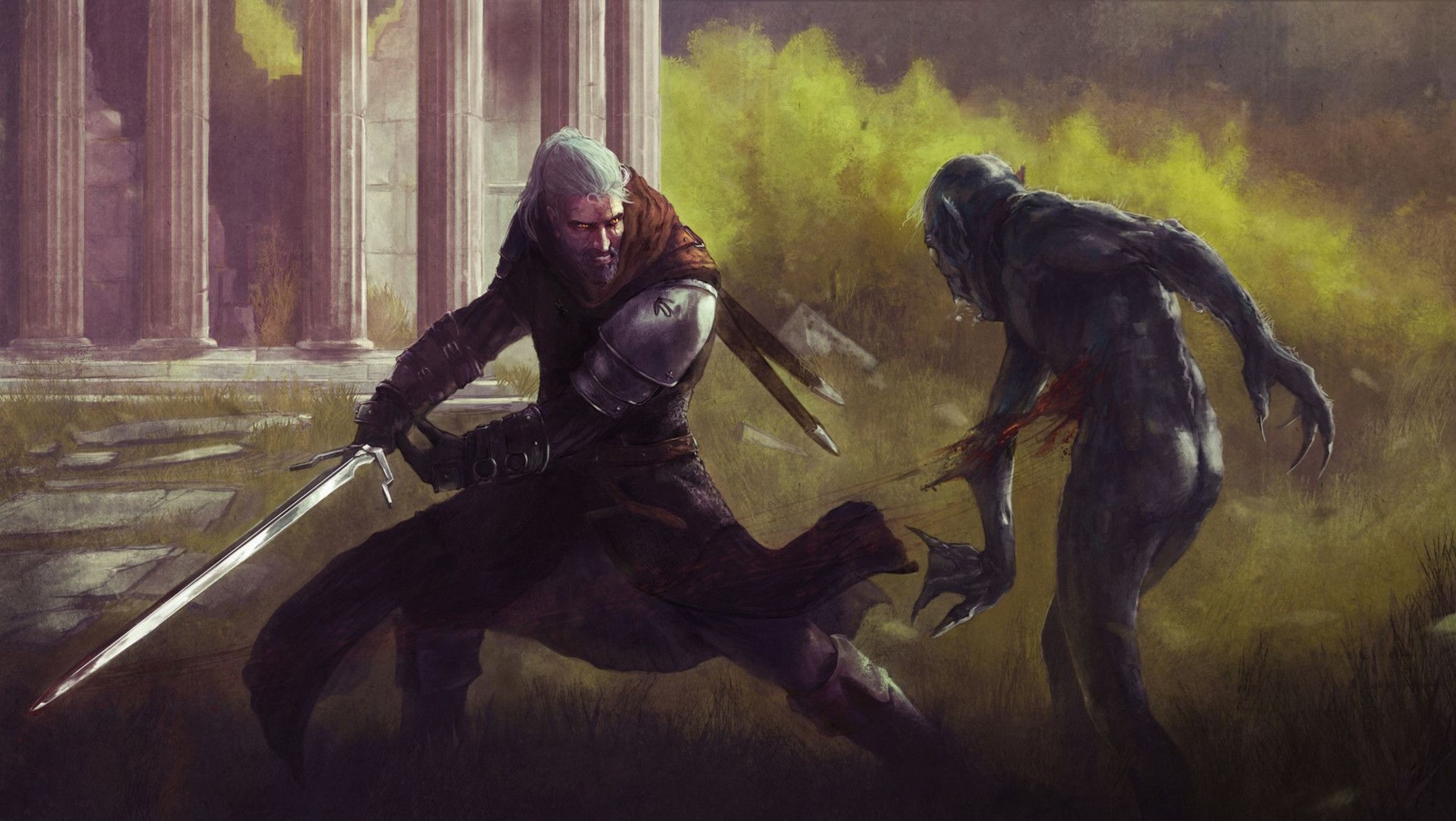
Face it, we all want to be Geralt of Rivia.
Silver and Adamantine weapon damage deserved its own spot of special recognition on this list. Though they are not “damage types”, they are materials for weapons that circumvent certain resistances to damage that some creatures have. Having adamantine weapons allows you to do combat damage to a dangerous golem, whereas a silvered blade can damage a werewolf or wraith as though it were normal.
These effects are associated with a heavy cost and do not otherwise increase the damage your weapons can do, but they broaden the available options you have as a player with non-magical weapons.
Silver/Adamantine Strengths
- Damage-type Benefits
- Weapons that are silvered or made of adamantine continue to provide the same benefits of their non-enhanced counterparts.
- Resistance Bypass
- Silver/Adamantine weapons can bypass certain resistances/immunities held by some creatures.
Silver/Adamantine Weaknesses
- Damage-type Weakness
- Weapons that are silvered or made of adamantine continue to suffer the same weaknesses of their non-enhanced counterparts.
- Cost
- As a player who has not attained a magical weapon, a silvered or adamantine one may seem like a good stepping-stone, but the cost can be extreme. Silvering a weapon costs about 100 gp and adamantine runs about 100 gp/lb, making an adamantine longsword that has been silvered cost about 400 gp.
Damage Type Usefulness Rating: 58/100
10. Fire Damage

For Dungeons & Dragons, directed by Michael Bay, check out Fire magic!
Fire damage is a type of elemental damage that is caused by the intense heat and flames of fire. Fire damage can be inflicted by a variety of sources, including spells, magical abilities, and attacks from creatures or objects that are engulfed in flames. Fire damage is typically resisted or mitigated by a creature's Dexterity saving throw or its resistance or immunity to fire damage, depending on its physiology or magical abilities. Some creatures, such as fire elementals or dragons, may have innate resistance or immunity to fire damage.
Fire damage can be inflicted by a variety of sources, including player character attacks, monster attacks, and traps. For example, a wizard might cast a "Fireball" spell, which explodes in a 20-foot radius and deals fire damage to all creatures in the area, while a dragon might breathe a cone of fire, causing both fire and piercing damage.
Who doesn’t love a good fire spell? In the world of D&D, fire damage is one of the most common non-physical types, and your enemies are just as prepared as you. The Monster Manual holds 37 monsters with a resistance to fire, and another 40 that are flat-out immune. While this doesn’t bode well for your flame-casting wizard, fear not, as fire also has the highest number of monsters who are vulnerable…coming out at nine.
From casting firebolt to hurling a torch, fire does provide wonderful uses in and out of combat. While some enemies may not be hurt by fire directly, it is always good to light up a room, or even block your retreat. Interaction with the environment is good to remember, and while “Fireball” may not always be the best option in a fight, casting it into a pool of water to fill a room with steam may be the only way to see the Will-o’-Wisp draining you of life.
Fire Damage Strengths
- Low-level Spell
- The majority of spells with fire damage types can be learned at, or before, level five.
- Common Use
- Whether it’s “Produce Flame”, “Prestidigitation”, or a burning branch, fire can be used to cook food, light a room, warm a player, or spring a trap.
- Interaction
- Fire damage is quite useful in its interaction with the environment. As a player, you can prepare an oil trap and reduce an undead to ash or create a comical distraction with a fire in the outhouse.
- Monster Vulnerability
- Nine monsters have vulnerability to fire, allowing players to deal additional damage to creatures like the Treant or Skeleton.
Fire Damage Weaknesses
- Monster Resistance/Immunity
- A large number of monsters are resistant or immune to fire damage, so knowing your foe will be an advantage.
- Temperamental
- Fire can be hard to control, and letting it get out of the player’s influence can lead to major issues.
- Environmental Hazard
- D&D doesn’t have Smokey the Owlbear to warn you about the danger of forest fires, but seeing a town consumed in flames as the result of your misplaced flaming arrow could land you in some serious trouble.
Damage Type Usefulness Rating: 65/100
09. Cold Damage

The magic spells with the best catch phrases...chill out!
Cold damage is a type of damage that can be inflicted on a character or creature because of certain attacks or environmental effects. Cold damage can be caused by spells, such as the "Cone of Cold" or "Frostbite," as well as by attacks from creatures with natural cold-based abilities, such as a white dragon's breath weapon. Cold damage can also be inflicted by environmental factors, such as being exposed to extreme cold temperatures or being submerged in icy water.
In addition to dealing damage, cold damage can also have other effects, such as slowing the movement of those who are damaged by it or causing them to become more vulnerable to other forms of damage. Some characters and creatures may also have innate resistance to cold damage due to their nature or ancestry.
A refreshing breeze can quickly become an icy wind, and cold damage will start to take its toll. While the Monster Manual contains 46 enemies who are resistant to the cold and another 20 who are completely immune, a “Ray of Frost” will still put many enemies on ice…including the 4 that have a vulnerability to cold damage.
While the freezing touch of weapons may lack the appeal of a grand fireball, they do not want for usefulness. With fire spells being prevalent, even among enemies, why not turn a nearby river into an icy shield against your enemies. With a cold spell at the ready, every waterskin is a slipping hazard for the pursuing enemy, and every stream can quickly become a bridge.
Cold Damage Strengths
- Status Impacts
- While cold damage may be minor compared to other means, the ability to slow an enemy, or even freeze them in place, is something that is hard to pass up.
- Monster Vulnerability
- While only four monsters are vulnerable to fire, they all live in the Underdark, so cold damage is useful if you know you are venturing below the surface.
- Environment Usage
- In most D&D Campaigns, water can be readily found. Just like steam has its uses for the fire spell, ice can help your player out of a variety of scenarios.
Cold Damage Weaknesses
- Monster Resistance/Immunity
- A large number of monsters are resistant or immune to cold damage, so knowing your foe will be an advantage.
- Environmental Limit
- While forming an ice bridge over a river is a cool option, if you find yourself trekking across a desert or plains, water will be in short supply.
Damage Type Usefulness Rating: 67/100
08. Lightning Damage

Power that would make Thor and Darth Sidious jealous.
Lightning damage is a type of damage that can be inflicted on a character or creature because of certain attacks or environmental effects. Lightning damage can be caused by spells, such as the "Lightning Bolt" or "Witch Bolt," as well as by attacks from creatures with natural lightning-based abilities, such as a blue dragon's breath weapon. Lightning damage can also be inflicted by environmental factors, such as being struck by lightning during a storm.
In addition to dealing damage, lightning damage can also have other effects, such as stunning those who are damaged by it or causing them to become more vulnerable to other forms of damage. Some characters and creatures may also have innate resistance to lightning damage due to their nature or ancestry.
Elemental damage is always a favorite among player characters, and lightning is certainly among the best of these. While several monsters still prove resistant or immune, with the Monster Manual listing ten and 35 respectively, those who aren’t wither in the face of an arcane storm. Lightning attacks tend to be more targeted than fire, and provide greater status effects than cold, making them the best option for versatile use.
Rendering a charge of goblins useless under the effects of “Chain Lightning” is an incredibly satisfying feeling and casting a successful “Witch Bolt” will make you feel like a Sith Lord as enemies fell around you. Lightning attacks may lack the out-of-combat versatility that fire and cold have, but when you find yourself rendering an opponent unable to move with “Shocking Grasp”, you’ll be happy for spending the spell-slot.
Lightning Damage Strengths
- Status Impacts
- Limited to stopping the reactions of enemies, lightning lacks the versatility of other elements, but makes up for it with this powerful effect.
- Environment Usage
- While powering machinery made by your Gnome Artificer sounds cool, the real power of lightning is in using water as a conduit to hit and stun multiple enemies.
- Damage over Time
- Enemies impacted by lightning damage will suffer from some of the highest elemental damage available, and you can keep it up turn-after-turn.
Lightning Damage Weaknesses
- Monster Resistance/Immunity
- A large number of monsters are resistant or immune to lightning damage, so knowing your foe will be an advantage.
- Access
- The number of lightning spells are limited, and other than “Witch Bolt” and “Shocking Grasp”, you won’t find another Lightning spell until level three.
Damage Type Usefulness Rating: 70/100
07. Acid Damage

Eat away at your enemies!
Acid damage is a type of damage that can be inflicted on a character or creature because of certain attacks or environmental effects. Acid damage can be caused by spells, such as the "Melf’s Acid Arrow" or "Acid Splash," as well as by attacks from creatures with natural acid-based abilities, such as a black dragon's breath weapon.
In addition to dealing damage, acid damage can also have other effects, such as causing ongoing damage to those who are damaged by it or reducing their resistance to other forms of damage. Some characters and creatures may also have innate resistance to acid damage due to their nature or ancestry.
Acid damage has staying power. With only two spells available that deal acid damage, you may have to get creative, however, the ability to deteriorate armor, free yourself from a cell, or eat away an enemy’s weapon is something that cannot be overlooked. “Melf’s Acid Arrow” has the power to deal 4d4 for two rounds at level two, averaging 16 acid damage with a single successful cast, provided they aren’t one of the 18 enemies with resistance or 15 who are immune.
The lack of variety for the use of acid damage often deters players from its use, but like many things, acid can be used well outside of combat in D&D. A vial of acid may eat away the chains on a sleeping Minotaur or can be used to make an entrance into the enemy stronghold.
Acid Damage Strengths
- Adaptable Use
- Under controlled and specialized use, acid can provide a solution to some of the trickiest situations in D&D.
- Damage over Time
- Whether decaying an enemy's armor or burning their skin, turn-continuous damage is always a bonus.
Acid Damage Weaknesses
- Monster Resistance/Immunity
- A total of 33 monsters have resistance or immunity to acid, making knowledge a powerful factor in its use for combat.
- Availability
- While some acids are naturally occurring or sold in common supply, crafting is often the name of this game, and acid is always hazardous to work with.
Damage Type Usefulness Rating: 74/100
06. Thunder Damage

Harnessing a sonic boom can provide many combat advantages.
Thunder damage is a type of damage that can be inflicted on a character or creature as a result of certain attacks or environmental effects. Thunder damage can be caused by spells, such as the "Thunderwave" or "Booming Blade," as well as by attacks from creatures with natural thunder-based abilities, such as the Thunderclap from an Ancient Bronze Dragon’s Lair. Thunder damage can also be inflicted by environmental factors, such as being caught in the blast radius of a loud explosion or being hit by a sonic attack.
In addition to dealing damage, thunder damage can also have other effects, such as deafening those who are damaged by it or causing them to become more vulnerable to other forms of damage. Some characters and creatures may also have innate resistance to thunder damage due to their nature or ancestry.
Thunder damage provides players with a chance to be heard. Dealing damage from the sonic boom of attacks can provide crippling effects and, when strong enough, deafen enemies or knock them backward. The list of spells and abilities is a bit broader than Acid, but not by much, leaning on cantrips such as “Booming Blade” for most of its use.
Thunder damage is one of the first mentioned that begins to apply to nearly every enemy, so its uses in combat are pretty widely acceptable. Fighting near the edge of cliffs becomes particularly hazardous, as many thunder attacks push an enemy back up to 10 feet, perhaps sending them sprawling over the edge. In some situations, the accompanying sound can be to your advantage, serving as a needed distraction or sending terror into enemies.
Thunder Damage Strengths
- Adaptable Use
- With thunder damage, the noise is unavoidable. In the right situations, this can provide cool opportunities for you and your party. The soundwave provides a push as well, so turn your environment to your side.
- Lacking Immunity
- In all the world of D&D, only two enemies will be left untouched by thunderous effects, and the Earth Elemental is even vulnerable to these attacks.
Thunder Damage Weaknesses
- Audible Sound
- In the wrong situation, exposing your location or drawing unwanted attention may end badly for you and your party.
- Resistant Enemies
- Within the pages of the Monster Manual, only two enemies are immune to thunder damage, but there are still 14 who can resist its effects.
Damage Type Usefulness Rating: 77/100
05. Necrotic Damage
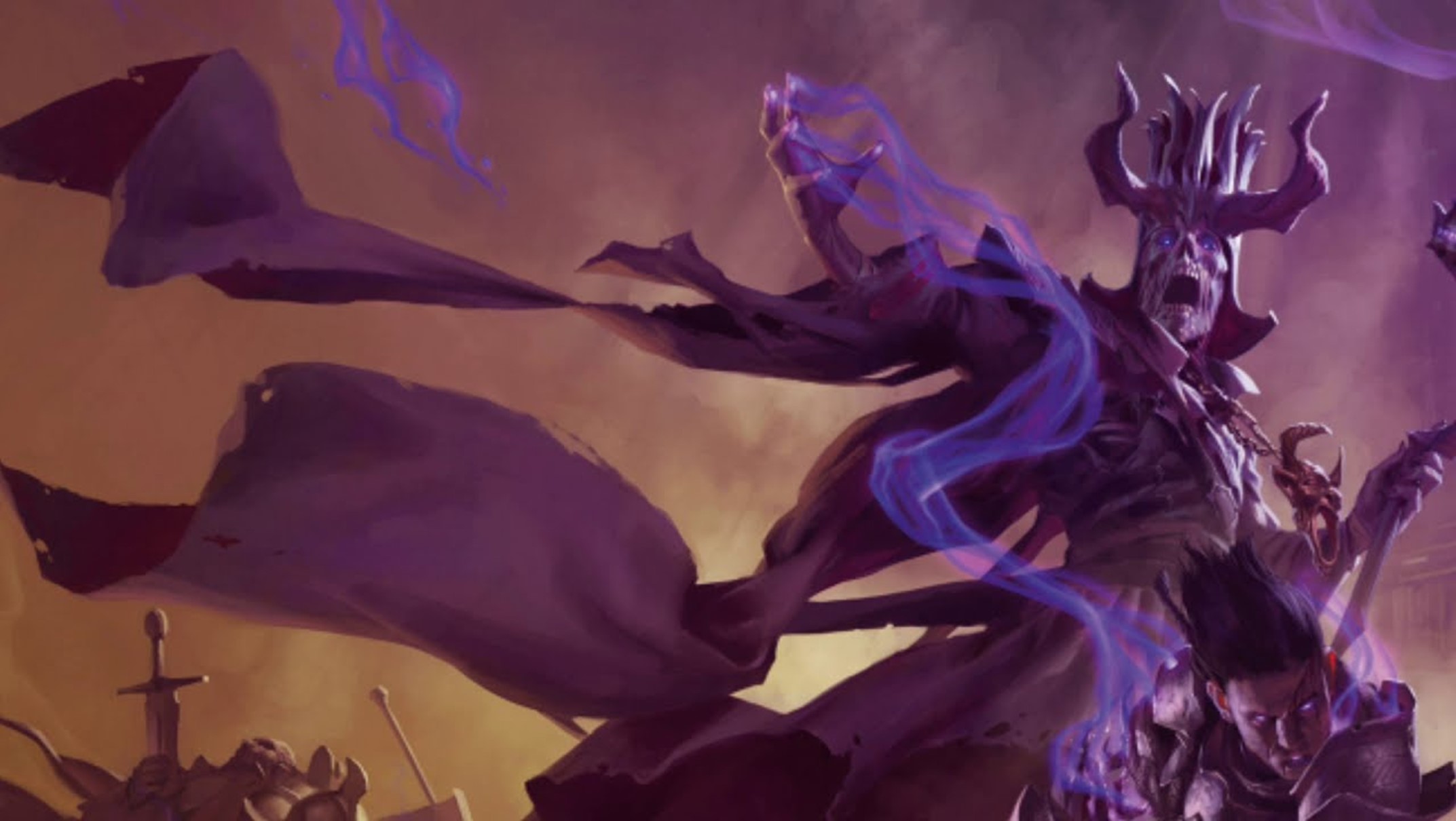
If it's powerful magic you seek, follow Vecna's path to Necrotic damage.
Necrotic damage is a type of damage that is inflicted on a character or creature from certain attacks or environmental effects. Necrotic damage is associated with negative energy and can be caused by spells, such as the "Inflict Wounds" or "Finger of Death," as well as by attacks from creatures with natural necrotic-based abilities, such as a mummy's touch. Necrotic damage can also be inflicted by environmental factors, such as being exposed to negative energy or being in an area contaminated by it.
In addition to dealing damage, necrotic damage can also have other effects, such as reducing the healing received by those who are damaged by it or causing them to become more vulnerable to other forms of damage. Some characters and creatures may also have innate resistance to necrotic damage due to their nature or ancestry.
Necrotic damage can most often be found connected to the negative alignment of characters. Necromancy and related skills can often be considered illegal in many campaigns, but the effects of these damaging abilities and effects are tremendous. Certain spells, such as “Hex” provide the wielder with the ability to dish out 1d6 necrotic damage with every attack, provided they can maintain the concentration to do so.
Necrotic damage is limited in out-of-combat usage in a way that some of the more elemental types are not, but that means the scale of in-combat use is more tuned. Combat boosts, like “Hex” not only provide added damage, but can provide a disadvantage on enemy ability checks. Creative incorporation of necrotic abilities can lead to interesting character builds too, like the Hexblade Warlock or the Death Cleric.
Necrotic Damage Strengths
- Strong Combat Tools
- Necrotic damage scales well and provides an additional boost to many non-magical attacks.
- Status Effects
- Spells in this category have the ability to sap life, provide disadvantage, knock prone, or put enemies to sleep.
- Widely Effective
- Only 22 enemies crawling in the Monster Manual have immunity or resistance to necrotic damage and, surprise, they are all undead. So, unless you are heading to the graveyard, you’ll likely do some damage to your opponents.
Necrotic Damage Weaknesses
- Lore Disadvantage
- Necromancy is seldom viewed as a respected form of magic, so in some campaigns, you may want to avoid public displays.
- Multiclassing Must
- While boosted weapon damage is universal, spells are not. If you want access to everything necromantic, you are going to have to branch into different classes along the way.
Damage Type Usefulness Rating: 80/100
04. Psychic Damage
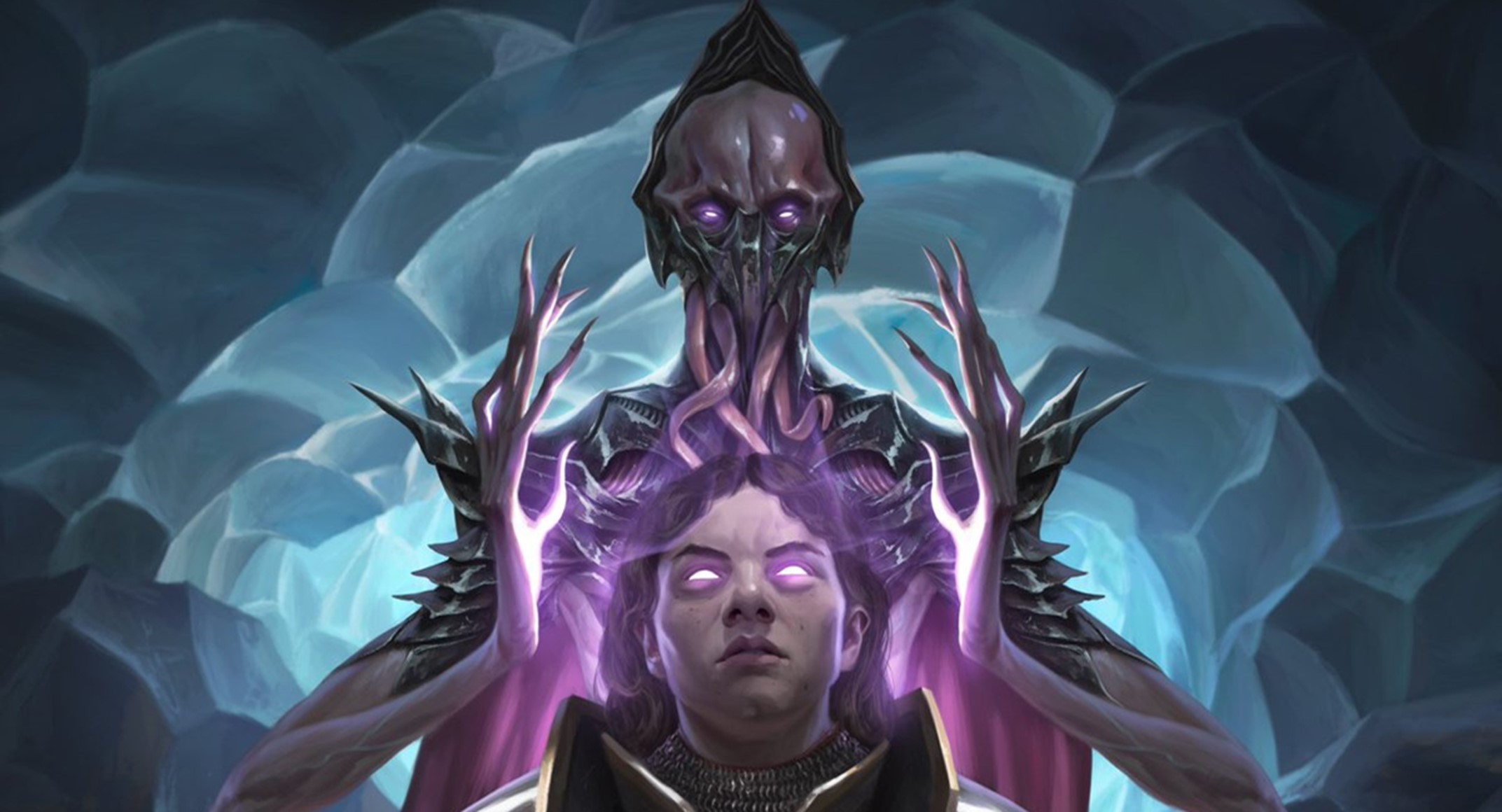
The Mindflayers...gives me the creeps just thinking about their terrifying power.
Psychic damage is a type of damage that is inflicted upon a creature's mind rather than its body. This type of damage is typically associated with spells and abilities that manipulate or attack the creature's thoughts, emotions, or memories.
In D&D 5E, psychic damage is not a separate damage type like fire or cold damage. Instead, it is often described in the text of a spell or ability and is typically treated as a form of magical damage. Some creatures may have resistances or vulnerabilities to psychic damage, and certain spells or abilities may allow a creature to deal or receive additional psychic damage.
Psychic damage is rarely seen in the D&D universe, as most players prefer to dish out flashy spells, but the utility effects of warping an opponent's mind should not be discounted. The ability to confuse an enemy or provide disadvantage to enemy rolls, reduce damage from attacks, instill fear, or assert control gives the user of psychic attacks immense power on the battlefield.
The out-of-battle uses for psychic abilities are nearly limitless. Consider the power of a Jedi’s mind trick, then amplify that to the effect of summoning someone's nightmares or render a character unable to speak or use items. While the uses are endless, they do require a certain amount of concentration to pull off and will certainly terrify townsfolk or mundane witnesses.
Psychic Damage Strengths
- Out-of-Combat Uses
- Psychic abilities can open the minds of NPCs and enemies alike, offering unique ways to handle numerous situations.
- Successful Damage
- With only one creature in the Monster Manual having resistance and ten with immunity, psychic damage will likely hit almost every opponent you encounter, provided they have a mind to attack.
Psychic Damage Weaknesses
- Damage Output
- Psychic damage does not typically have the flashy damage dice of other effects. While there are exceptions, most common forms, like “Vicious Mockery”, only apply an additional 1d4 psychic damage.
Damage Type Usefulness Rating: 88/100
03. Radiant Damage
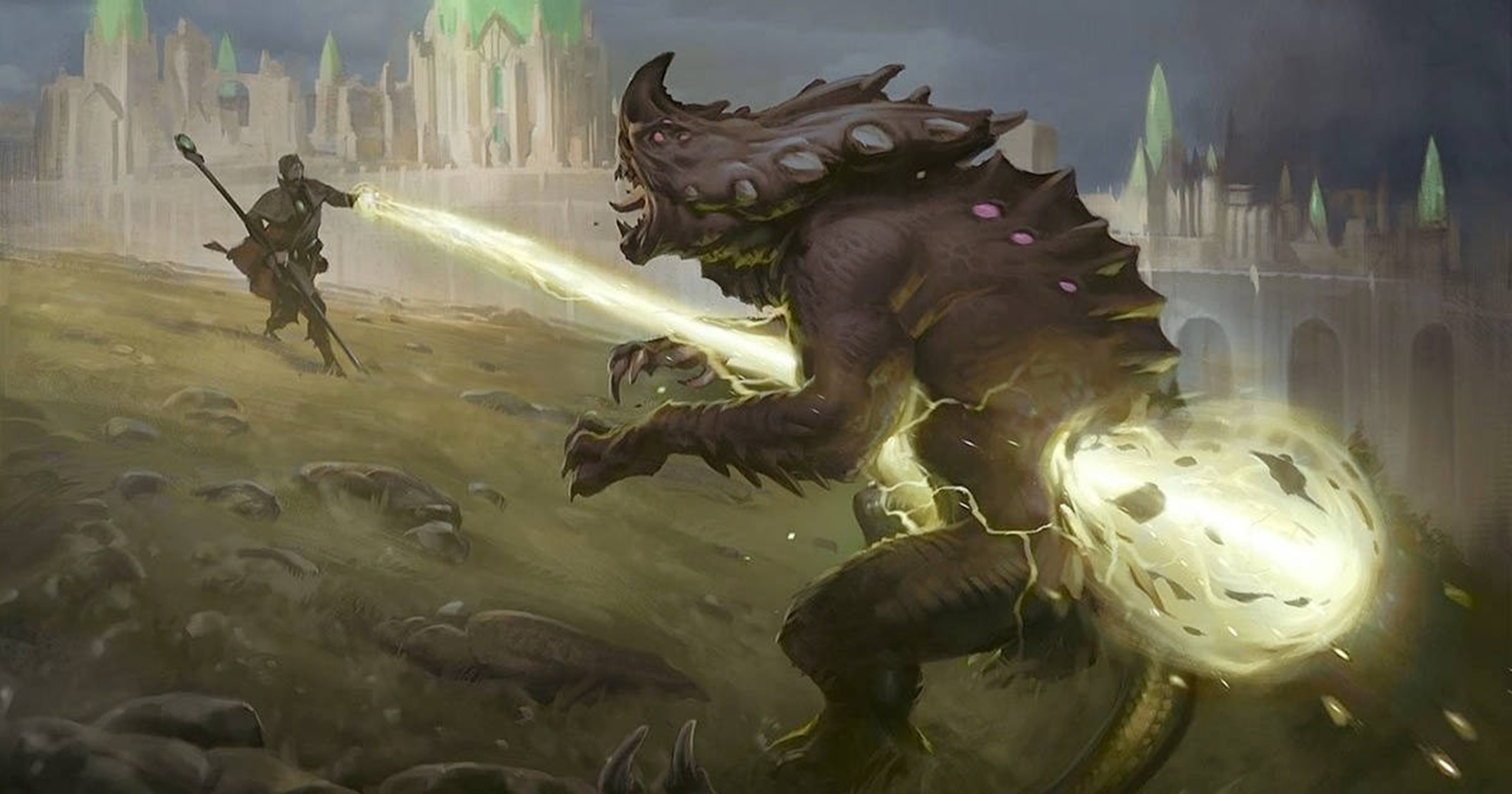
Radiant damage gives "holy" a whole new meaning!
Radiant damage is a type of damage that is associated with light and energy. This type of damage is typically inflicted by spells and abilities that harness the power of light or the divine.
Like psychic damage, radiant damage is often described in the text of a spell or ability and is typically treated as a form of magical damage. Some creatures may have resistances or vulnerabilities to radiant damage, and certain spells or abilities may allow a creature to deal or receive additional radiant damage.
Commanding radiant damage more than likely places you squarely on the side of “good” in the alignment spectrum. Available primarily to Paladins and Clerics, these spells and abilities may find a few enemies resistant to them, but no monster is immune to radiant attacks, making it one of the most reliable forms of damage. In addition to added damage, the effects of these spells can upend evil creatures' advantages in the dark and provide an even field anywhere.
While the out-of-combat uses of radiant damage may be more limited than some of the others, the ability to target a broad range of enemies with nearly sure success is something any adventurer can appreciate.
Radiant Damage Strengths
- Reliable Damage
- No creature is safe from radiant damage. While there are four who are able to resist it, you will rarely find yourself in conflict with them.
- Damage Output
- The output of radiant damage is nothing to sneeze at. The level one spell “Radiant Bolt” can deal 4d6 radiant damage to any target within 120 ft. For most enemies at level one, that is an instant defeat.
- Effects on Evil
- Radiant damage typically comes from a holy source, and most homebrew campaigns provide added bonus for this. Barring that, spells like “Moonbeam” have the ability to shutdown shapeshifting, keeping werewolves and vampires bound to their form.
Radiant Damage Weaknesses
- Out-of-Combat Utility
- Radiant damage doesn’t allow for the cool “story” effects of all the others, though it is possible to do some interesting things with the right explanation behind them.
Damage Type Usefulness Rating: 92/100
02. Force Damage

The Jedi and Sith were onto something with the power of the Force.
In the fifth edition of the Dungeons & Dragons role-playing game, force damage is about as good as it gets. A type of damage that is associated with pure magical energy, this is typically inflicted by spells and abilities that harness the power of pure force or kinetic energy.
Instead of being calculated separately, it is often described in the text of a spell or ability and is typically treated as a form of magical damage. There are no creatures who can resist force damage, and only the Helmed Horror is immune to its effects.
Force damage is easily the most powerful form of magical damage that can be applied in Dungeons & Dragons. The “Eldritch Blast” of the Warlock sends scaling bolts of crackling energy at opponents for 1d10 force damage each, while the nearly unblockable “Magic Missile” can hit enemies for 1d4 for each missile sent…scaling up to 11 separate attacks at 9th level casting.
When you consider that you are launching pure arcane energy around, force damage becomes that much more useful. With spells like “Disintegrate” at your disposal, you can leave enemies, or troublesome objects, as nothing but a pile of dust. “Eldritch Blast” can allow you to break objects at a distance, perhaps knocking something in the path of fleeing quarry.
Force Damage Strengths
- Reliable Damage
- There is only one creature in the whole of the Monster Manual who is immune to force damage, so feel secure in taking on nearly any opponent.
- Damage Output
- Similar to radiant damage, force damage can reliably hit enemies hard enough to make the difference in a fight.
- Out-of-Combat Use
- Force damage can apply needed effects in the “story” of the world as well, such as breaking down a door or knocking a torch from the wall, allowing for darkness to shroud an escape.
Force Damage Weaknesses
- Virtually none
- Unless you are the Helmed Horror, force damage will apply.
Damage Type Usefulness Rating: 95/100
01. Magical Weapon Damage
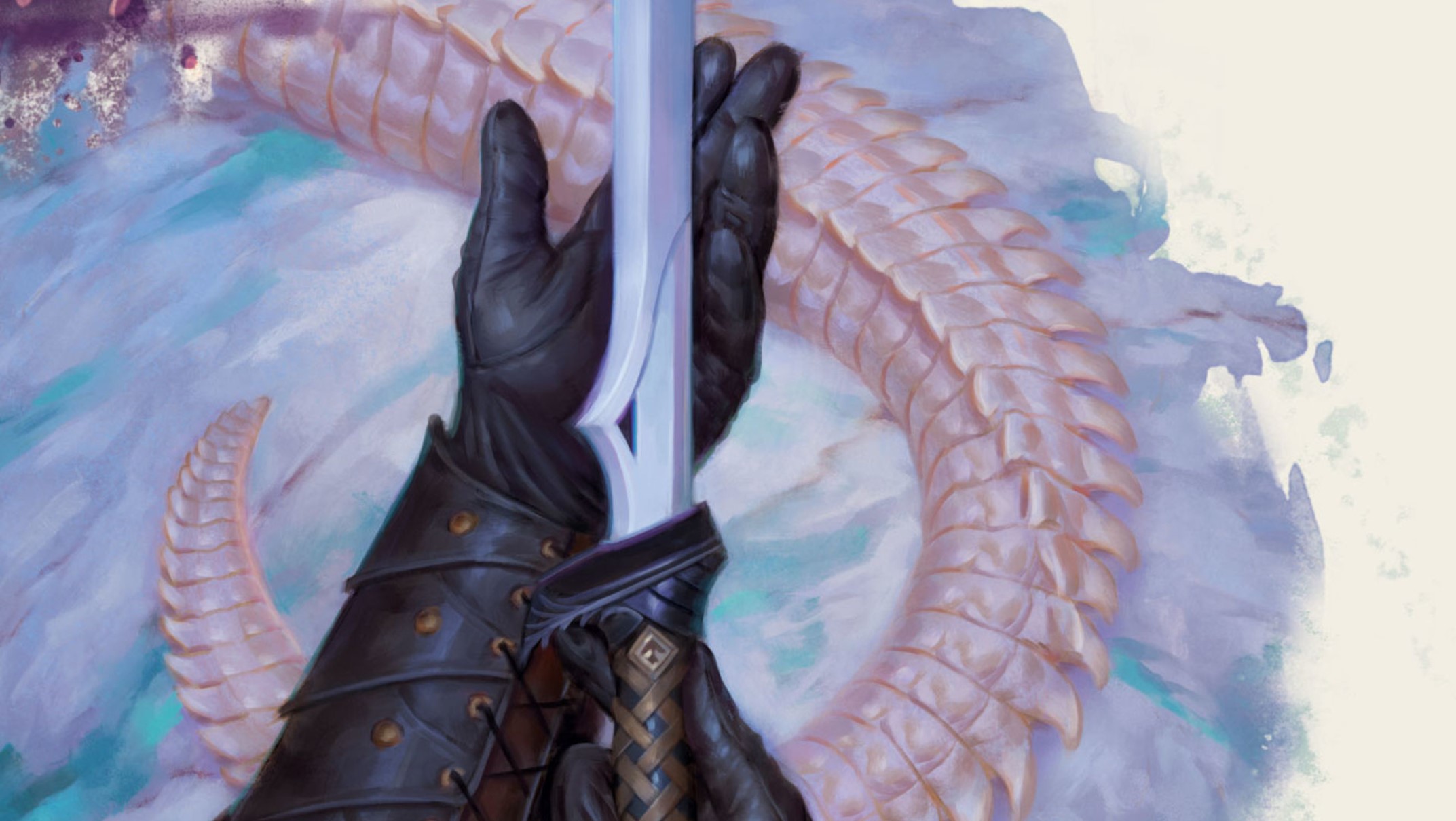
The blade Icingdeath...drawn from the cave of its Draconic namesake.
Perhaps one of the coolest moments for every D&D player is receiving their first magical weapon. Whether you are prying a blade from a dragon’s hoard or solving a puzzle to access some mystical sanctum, magic weapons are something almost every player will acquire in their time.
While their damage is based on the same Slashing, Piercing, and Bludgeoning effects as mentioned before, respective to the type of weapon, magical weapons are able to bypass all the immunities of enemies that will be encountered, and only the Demilich is able to even resist the effects of arcane weapons.
While most campaigns reserve these as priceless rewards for successful questing, they are well worth the wait. For reliability of damage, as well as the untold other effects of the weapon itself, Magical Weapons find themselves at the tip-top of our list.
Magical Weapon Damage Strengths
- Reliable Damage
- Nothing cannon to Dungeons & Dragons is immune to damage from a Magical Weapon
- Damage-type Benefits
- Weapons that are magical in nature continue to provide the same benefits of their non-magical counterparts.
- Magic
- Depending on the power imbued in the weapon, the wielder could experience anything from advantage on attacks to a blade imbued with any of the other magical damage effects listed above.
Magical Weapon Damage Weaknesses
- None
- Only one creature is even resistant, and none are immune to magical weapons.
Damage Type Usefulness Rating: 100/100
You may also be interested in:
- 32 Most Interesting Facts About Dungeons and Dragons!
- 25 Best D&D Games for PC That Every Fan Must Play!
- Log in or register to post comments
 Home
Home PC Game Trailers
PC Game Trailers News
News Menu
Menu



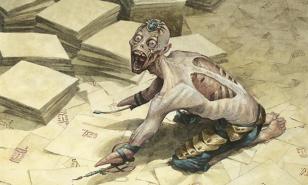

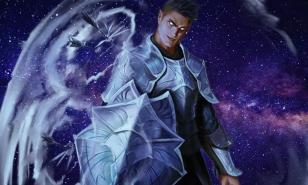
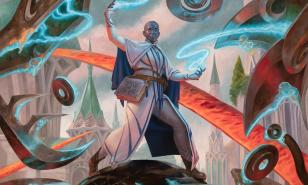

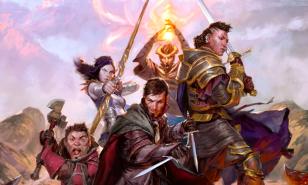



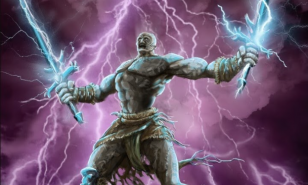


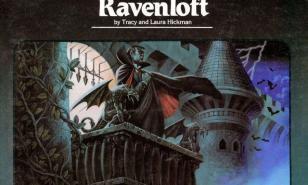
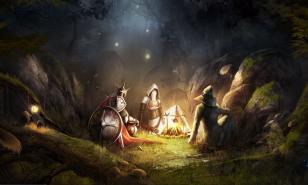



![[Top 10] D&D Best Wizard Weapons and Items Best wizard magic items, best magic items for wizards, best wizard items, best items for wizards, wizard items, wizard magic items, items for wizard, items for wizards, magic items for wizard, magic items for wizards, caster magic items, magic items for casters, caster items, must have items for wizards, must have magic items for wizards, magic items to pick for wizards, items to pick for wizards, magic items to pick for wizard, items to pick for wizard](https://www.gamersdecide.com/sites/default/files/styles/308x185-scale-crop--more-top-stories/public/battle_of_will.jpg)



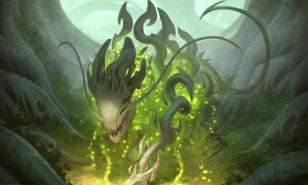
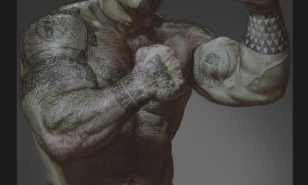
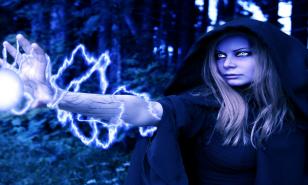

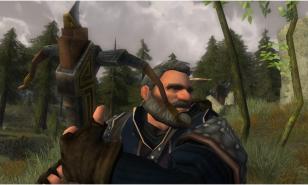



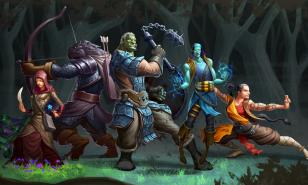
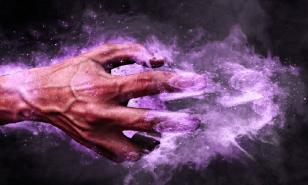
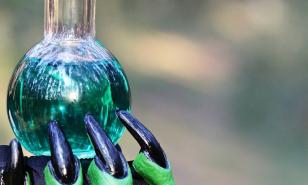


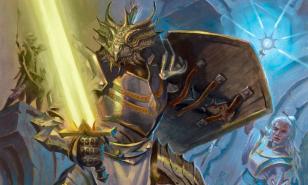


![[Top 3] D&D Best Druid Subclasses To Play](https://www.gamersdecide.com/sites/default/files/styles/308x185-scale-crop--more-top-stories/public/top_3_dd_best_druid_subclasses_to_play_1.jpg)
![[Top 3] D&D Best Wizard Builds of All Time d&d wizard spells,best wizard builds, best wizard build, top wizard builds, top wizard build, control wizard build, control wizard guide, divine wizard guide, nuclear wizard guide, best spells for wizards, best spells for a wizard, how to play a wizard, how to build a wizard, dnd best wizard build, dnd best wizard builds, d&d best wizard build, d&d best wizard builds, d&d wizard guide, ddivine wizard build, nuke wizard build](https://www.gamersdecide.com/sites/default/files/styles/308x185-scale-crop--more-top-stories/public/top-3-wizard-builds-4_1.jpg)






